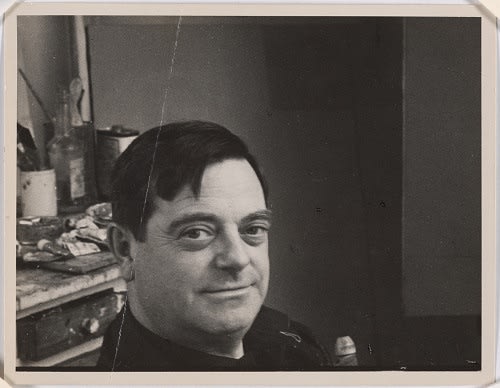Ludwig Sander (1906–1975) was a painter and printmaker best known for his highly controlled geometric abstractions incorporating elements of color field theory. At the beginning of his career, Sander studied with Alexander Archipenko and Hans Hofmann, the latter of whom encouraged his move away from figuration to a more abstract approach. Sander’s signature style is characterized by flat planes of complementary colors traversed by horizontal and vertical lines and constructed by building up opaque layers of paint within each section of the canvas. The resulting effect is calming and contemplative, radiating a cool and muted lyricism. In 1949, Sander co-founded “The Club,” a discussion group for artists which included figures such as Willem de Kooning and Franz Kline among its members; two years later, his work was exhibited at the legendary Ninth Street Show in New York.
His work is in permanent collections of the Metropolitan Museum of Art, Whitney Museum of American Art, and the Solomon R. Guggenheim Museum, Albright-Knox Art Gallery, Buffalo, New York; M.I.T. Museum, Cambridge, Massachusetts; Corcoran Gallery of Art (now, National Gallery of Art), Hirshhorn Museum and Sculpture Garden, Washington, DC; Baltimore Museum of Art, Maryland; Art Institute of Chicago; Walker Art Center, Minneapolis, Minnesota; Art Institute of Chicago; Modern Art Museum of Fort Worth, Texas; and the San Francisco Museum of Modern Art in California, etc.
